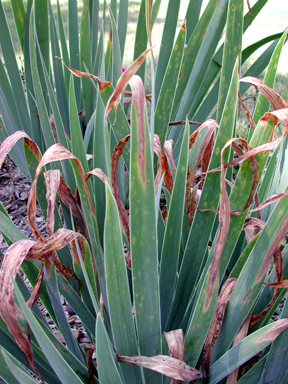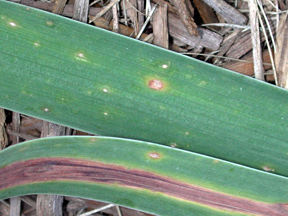Scouting for disease: Didymellina leafspot
Editor’s note: This article is from the archives of the MSU Crop Advisory Team Alerts. Check the label of any pesticide referenced to ensure your use is included.
Author note: Symptoms of this disease are starting to develop in the landscape.
Symptoms: The first symptoms are tiny, brown spots with water-soaked borders. As disease progresses, the water-soaked areas develop into irregular spots with grayish centers and dark borders. Foliage is killed, weakening the rhizomes. Disease severity worsens after bloom.
Spread: Rain and splashing water disseminate spores to adjacent plants. The disease can easily be introduced on infected plant material.
Management: Good sanitation is important. Leaf debris should be removed in the fall to reduce inoculum, which overwinters on the dead foliage. If infected debris is left in the area in the spring, the pathogen can sporulate and reinfect developing foliage.
Editor’s note: This and more disease identification information is available in the field guide A Pocket Guide for IPM Scouting in Herbaceous Perennials. To order, call 517-353-6740.



 Print
Print Email
Email




